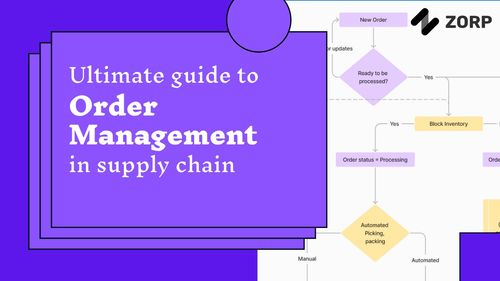This post is the last post in the series of How to run your Warehouse Operations Process. You can check out the previous posts below. I highly recommend it.
Introduction to Warehouse Operations
What is Warehouse Picking Process
What is Warehouse Packing Process
Warehouse Dispatch Process: Ensuring Efficient and Accurate Order Fulfillment
An inventory audit is a process of verifying the accuracy of the inventory records and physically counting the items in the warehouse. It helps identify any discrepancies in the inventory levels that are present in the Warehouse Management System (WMS) and the physical stock available in the warehouse. This ensures that the warehouse has the right amount of stock on hand to meet customer demand.
There are several types of inventory audits, including
Periodic audits are conducted at regular intervals, such as once a year. This is typically done at the end of the financial year to close the books.
while perpetual audits are conducted continuously. These can be daily, weekly or monthly audits that are done to make sure that the inventory is tracked accurately in the real world. These are the most common types of audits done in a warehouse.
Cycle counts are conducted on a smaller scale and focus on specific areas or items within the inventory. A sample example could be that fast moving items in a warehouse could be audited more frequently than the slower moving items. This makes the audit process more efficient.
It's important to perform inventory audits at different times to ensure the accuracy of the inventory records. For example, an inventory audit should be conducted before and after a busy sales period or after a major stock update.
Some audits are driven by the business needs and others by regulatory requirements. Work with the auditors and your operations teams to plan your audit timelines.
To plan your inventory audit, you need to set aside time for the audit, gather the necessary materials (such as a checklist or inventory software), and ensure that you have access to all the areas of the warehouse that will be audited.
It is important to plan your audit timelines and methods early since they tend to disrupt the standard warehouse operations. Movement of goods in and out of the warehouse when an audit is being conducted is discouraged and might lead to misleading information. So, typically, audits are conducted during the non-operational hours of the warehouse.
Similarly, audits are conducted by approved professionals who are not responsible for day to day movement of inventory. This will help avoid biases and accidental mistakes.
The audit process involves going through every location of the warehouse and counting and mapping the items. When done completely manually, it takes a lot of time and effort. In order to improve the process efficiency, you should look at having an Audit tool.
There are several tools that can help you execute the audit effectively, such as inventory software, RFID scanners, and barcode scanners. The most common type is a smartphone. Have an inventory audit application created and loaded in the smartphone. The smartphone can be used to check every single item easily.
If the items are serialized (with barcode or QR code), a simple scanning of the serial number using the phone camera or a barcode scanner will help you track the items accurately. This saved ~90% of the time spent in manually typing the code. This can also instantly map the items to the item in the digital inventory records.
Even without serialization, having the right inventory tracking tool will save a lot of time since the tool can automatically reconcile the tracked item with the item in the digital inventory. Without this, you will have to manually reconcile each item by writing on the paper and going to the inventory records and mapping them.
If you’re looking for mobile apps that help you track your inventory accurately according to your specific needs, you can look at Zorp. Zorp helps you build powerful applications for audit that fit your specific needs. It can also help you build this application in a fraction of the time.
After the audit is complete, you should reconcile the actual report based on the audit data. This involves comparing the physical count to the records in your inventory management system to identify any discrepancies. If there are discrepancies, try to determine the cause, such as incorrect data entry or lost or stolen items.
Based on the findings of the audit, you should take remedial actions to address any identified problems and improve the accuracy of your inventory records. This may involve updating the records in your inventory management system, implementing new inventory management processes, or conducting additional training for your team.
By following these steps, you can perform a thorough and comprehensive inventory audit that will help you manage your warehouse effectively and ensure that you have the right amount of stock on hand to meet customer demand.



